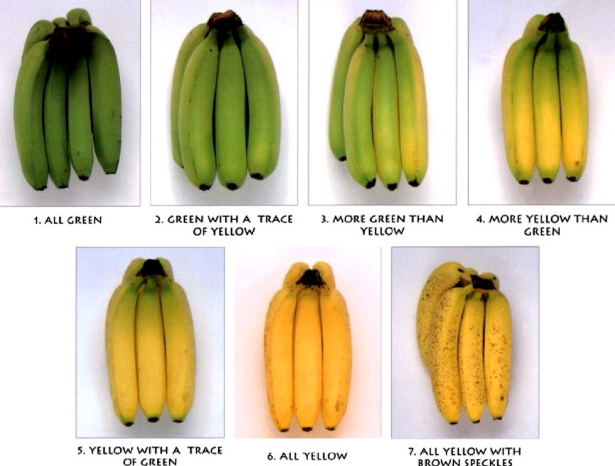Maturity of fruits and vegetables (physiochemical changes and ripening): Harvest maturity has a great influence on the post-harvest quality of fruits and vegetables. For example, Mango fruits harvesting at mature and have mature stages produced good quality characteristics when ripened at 25°C. The mature fruits are observed to have a faster rate of ripening compared to the half mature and immature fruits. The immature fruit only showed limited quality changes during ripening and normal physiochemical changes did not fully occur.
Maturity of fruits and vegetables
Chemical composition
Chemical changes are often used in determining the maturity of mango fruit for harvest. Total soluble solids, starch, Sugars, total carotenoid pigments, and pH are correlated positively with mature; whereas moisture content, acidity, ascorbic acid, and tannins are correlated negatively.
Rate of respiration
The rate of respiration of mango fruits varies with a variety of stages of maturity and ripening. Respiration attains at its maximum at the ripe stage compared to the unripe and senescent stage.
Ethylene production
In general, the rate of ethylene production remains lower in the pre-climacteric phase and increases considerably in the climacteric phase. Mature and half mature fruits showed a higher rate of ethylene production, ripened normally and maintained acceptable flavor and aroma when compared with immature fruits. Ripening of the immature fruits was insufficient as revealed by low ethylene production, poor color development, minor changes to fruit composition, insipid flavor and poor aroma. Although the rate of ethylene production remained low during the later stages of maturation, a peak in ethylene production was observed about 10 days prior to harvest maturity.
Rate of ripening
Fruit ripening also depends on the stage of maturity at harvest. Ripening of mango fruits at low temperatures was effectively retarded in the immature fruits compared with mature fruits of the variety ‘Amelie’. In contrast, the variety ‘Sensation’ ripened rapidly irrespective of harvest maturity. When the mature fruits were ripened at 25°C, they failed to develop the characteristics of full ripeness. Exposure of mature and half mature fruits to acetylene (1.6 mL/L) and ethylene (1.0 mL/L) for 8 hours resulted in the initiation of full ripening, whereas mature fruits failed to fully ripen.
